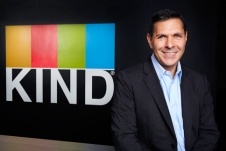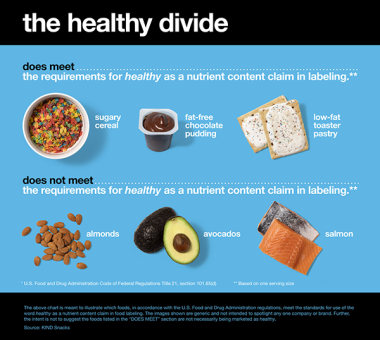Neil Blumenthal and his business partners – David Gilboa, Andrew Hunt, and Jeffrey Raider – believed the eyewear industry wasn’t responding to customer needs and found an innovative solution to meet those needs. Blumenthal, who recently spoke at the BRITE ’14 conference, explained, “[We] didn’t like the process of buying glasses. . . [or] that glasses cost as much as an iPhone.” As a result, they founded Warby Parker, a company with “a lofty objective: to create boutique-quality, classically crafted eyewear at a revolutionary price point.”

Warby Parker effectively disrupted the eyewear industry in two ways: First, by using a direct, e-commerce model -cutting out the middle man- and by building a new brand –thus not having to pay licensing fees-, they significantly lowered the price of stylish eyewear; their frames, with premium lenses included, start at $95, that’s 25% of the market price. And second, by creating their “home try-on program,” sending customers, free of charge, a test package of frames they select to try on at home before they commit to buy. As a spin-off benefit, the home try-on experience is a shared customer experience, inherently accessible to family, friends, and even co-workers. The program, then, turned in to a marketing tool itself.
Blumenthal described Warby Parker as a lifestyle brand that offers value and service with a social mission at its core. With every pair of glasses purchased, Warby Parker gives a pair of glasses to someone in need. “Even at $95, there are still about a billion people in the planet that don’t have access to glasses and we think that that’s just crazy,” he said. At the end of each month, the Warby Parker team tally up the number of glasses sold and makes a financial contribution to Vision Spring; an organization that uses glasses to create jobs, making a more sustainable impact. In terms of their own business, Blumenthal believes that having a social mission helps increase customer loyalty and referrals, but does not drive the decision of making the first purchase.
According to Blumenthal, what has helped build strong relationships with customers and ultimately increase sales is a culture of transparency. “The more vulnerable we are, the more that we put ourselves out there, the deeper those relationships and the more valuable they become from an economic standpoint,” he added. In just four years, Warby Parker has sold over 500,000 frames and has grown from an apartment-based startup in Philadelphia, to a 350-employee business with a flagship store in SoHo.
“The public and your customers [are] participating more and near dictating what your brand is…you need to give people the tools to have it the way you want them to have it,” Blumenthal explained. Warby Parker focuses on creating experiences that are meant to spark conversations both online and offline. “It’s all about customer experience and constant innovation.”
When asked about a seemingly counter-intuitive expansion into the realm of brick-and-mortar stores – Warby Parker now has stores in New York, LA, and Boston, and has showrooms within boutiques in five additional states- Blumenthal explained, “[The] medium doesn’t matter. It’s the experience that matters and we need to design those experiences [holistically] from the moment they hear about the brand.”
Sharing is a fundamental element of the Warby Parker strategy – internally with staff and externally with consumers. As the majority of Warby Parker employees are millennials who want instant feedback on their performance, the leadership team has instituted monthly informal reviews and quarterly 360° reviews.
Moreover, as Ross Crooks explains in Forbes, “Business is becoming increasingly personal…; we crave more personal connection in a web-based world.” Customers want to relate to the people behind the brands they support, they want to know “that employees are people they might hang out with.” The Warby Parker team constantly keeps their fans abreast of “what [Warby Parker is] doing, how and why”, which, Blumenthal says “pays in spades.” According to a recent Mintel study, millennials are more likely to overshare than their Baby Boomer parents.
Warby Parker’s annual report is a perfect example of how the company creatively engages stakeholders. The uni que feeling of its annual report has proved to be a successful marketing tool, leading to the highest sales days and traffic after releasing it each year and gaining free publicity for the brand; with fans sharing the report in social media, and getting mentions in press outlets such as Forbes, AdAge, Bloomberg BusinessWeek and Business Insider. This year’s infographic annual report is laid out as an illustrated calendar with an update for each day of the year, is described by Business Insider as “a shareable page of organized chaos inspired by internet culture.” One tidbit of transparency it shares in this year’s report is the fact that half the inventory of their new collection was delivered to the wrong address.
que feeling of its annual report has proved to be a successful marketing tool, leading to the highest sales days and traffic after releasing it each year and gaining free publicity for the brand; with fans sharing the report in social media, and getting mentions in press outlets such as Forbes, AdAge, Bloomberg BusinessWeek and Business Insider. This year’s infographic annual report is laid out as an illustrated calendar with an update for each day of the year, is described by Business Insider as “a shareable page of organized chaos inspired by internet culture.” One tidbit of transparency it shares in this year’s report is the fact that half the inventory of their new collection was delivered to the wrong address.
In today’s world, Blumenthal said, “brands are able to rise faster than ever before, but they’re also able to collapse faster than ever before.” Warby Parker has found that the best way to maintain momentum is by strengthening its connections with its customers through the sharing of relevant, personal, and entertaining content and the creation of experiences, regardless of the platform.
Watch Neil Blumenthal’s BRITE ’14 talk to learn more about how Warby Parker incorporates innovation into customer experience.
BY GABRIELA TORRES PATIÑO, EDITED BY ALLIE ABODEELY





 Educating customers about the use of new products will make or break your brand. In Nakumatt stores, for example, shoppers tried to put black mascara on their lips because they didn’t know what it was for. Now, according to the
Educating customers about the use of new products will make or break your brand. In Nakumatt stores, for example, shoppers tried to put black mascara on their lips because they didn’t know what it was for. Now, according to the 
 que feeling of its annual report has proved to be a successful marketing tool, leading to the highest sales days and traffic after releasing it each year and gaining free publicity for the brand; with fans sharing the report in social media, and getting mentions in press outlets such as Forbes,
que feeling of its annual report has proved to be a successful marketing tool, leading to the highest sales days and traffic after releasing it each year and gaining free publicity for the brand; with fans sharing the report in social media, and getting mentions in press outlets such as Forbes, 

